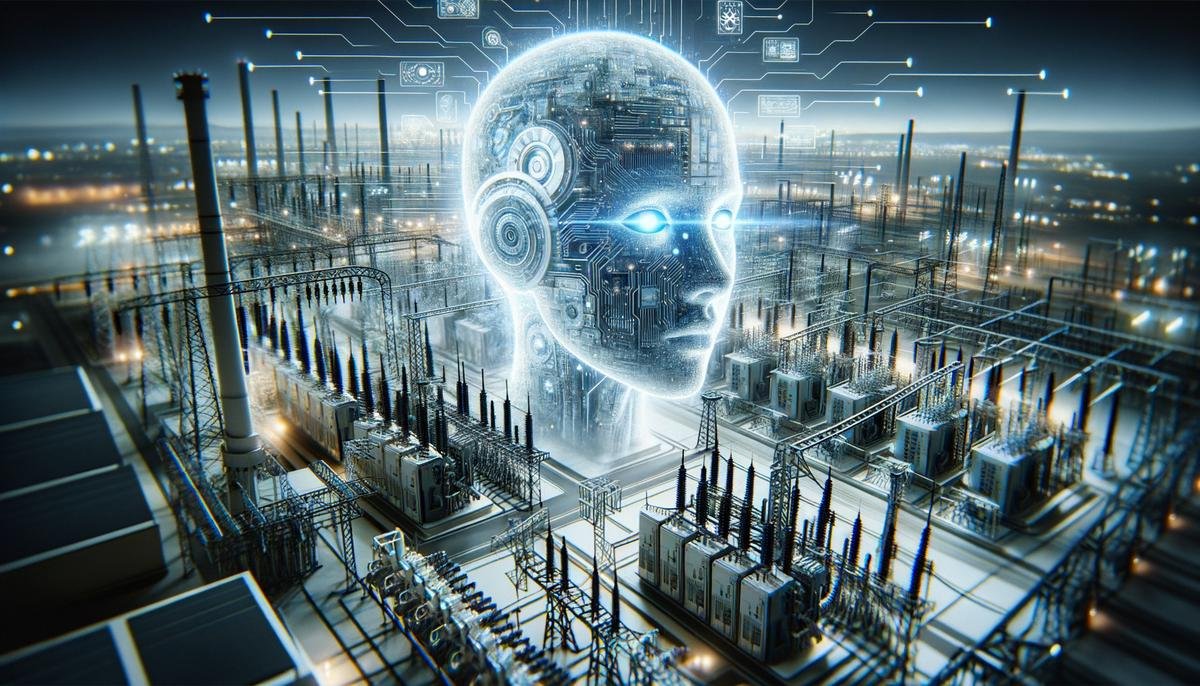Overview of Darktrace’s AI Technology
Darktrace harnesses its AI technology, notably beginning with the Enterprise Immune System. This system adapts continuously, employing advanced machine learning to learn and recognize an organization’s digital behaviors and anomalies. Just like a biological immune system distinguishes between normal cells and potential threats, this AI-driven technology discerns between typical network activities and potential cyber threats, which means it can rapidly detect unusual patterns that could indicate a breach.
Another key element of Darktrace’s arsenal is the Antigena module. This system supplements the Enterprise Immune System by functioning as an autonomous response solution. When Antigena uncovers a likely threat, it doesn’t just alert the IT team — it takes action. This might involve slowing down or stopping potentially compromised connections or files until a human can intervene.
Here’s a practical example: During an attack, if a device starts to transmit large volumes of data externally, Antigena can intervene by restricting this transmission until the situation is checked by cyber defense professionals. This swift responsive capability gives businesses crucial minutes that often stand between safety and a full-scale data breach.
To sum it up, Darktrace offers detection based on historical data and updates its understanding dynamically with each new activity—much like the continuous updates of a well-maintained software system but in an AI-centric, cybersecurity-focused fashion. Employing these adaptive AI technologies enables comprehensive monitoring and immediate responses that cover the expansive ranges of modern network environments, be they physical, cloud-based or virtualized.
Effectiveness of Darktrace AI in Real-World Scenarios
In recent times, Darktrace’s AI has been put to the test under some of the most challenging cybersecurity scenarios, demonstrating its effectiveness across various industries. Consider the case of a large financial services firm that was faced with a stealthy attack on its data center. The company’s deployment of the Enterprise Immune System enabled it to catch a hidden anomaly where data was being quietly siphoned off to a suspicious external server. Due to the AI system’s ability to learn from the ongoing patterns within the digital behavior of the organization, it identified and addressed this very subtle deviation from the norm before any material harm could be done.
In another scenario, a manufacturing company equipped with Darktrace’s technology observed unusual network traffic that was initially overlooked as benign. Fortunately, the system continued to track these small anomalies, and over time, aggregated them into a pattern indicative of advanced persistent threats (APTs). Before manual processes might have even initialized, Antigena had autonomously isolated the affected endpoints, effectively stymying the threat from spreading further, thereby preserving the company’s critical assets and infrastructure.
Utilities and energy sectors have also validated the worth of AI in hunting elusive threats on their operational technology (OT) networks. One significant incident involved an energy company detecting an unprecedented breach attempt on its infrastructure. This potential disruption could have compromised energy distribution, leading to broader grid instability. Again, Darktrace’s AI-driven approach identified anomalous commands sent to substation controls, initiating an immediate, autonomous response to curtail any potential impact without interference to regular operations.
Each case underscores the robustness of Darktrace’s technology and its broad applicability, stretching across industries with varying patterns of network behavior and digital environments.

Comparison with Other Cybersecurity AI Technologies
When evaluating Darktrace against other prominent players like Cylance, Vectra AI, and Palo Alto Networks, it becomes evident that each offers unique contributions to the field of AI-driven cybersecurity, albeit with differing focus areas and technologies.
- Cylance emphasizes its preventive capabilities, utilizing AI to predict and prevent threats before they manifest into actual attacks. While proactive, Cylance’s approach is generally more focused on prevention rather than dynamic response, contrasting with Darktrace’s model which heavily invests in real-time autonomous response mechanisms as seen with its Antigena module.
- Vectra AI excels in network-based threat detection. Its flagship Cognito platform employs AI to monitor network traffic diligently, parsing out subtle signs of potential threats from regular, mundane activities. These capabilities align closer to Darktrace’s real-time threat detection but with a primary window into network traffic as opposed to Darktrace’s broader scope that includes user and device behavior across the digital environment.
- Palo Alto Networks introduces another layer of sophistication with its AI-driven security platform, emphasizing accelerated threat identification and response much like Darktrace. Their approach is notably strong in integrating AI across diverse products offering a single view of threat intelligence which makes it effective at leveraging data from multiple sources to increase response times against threats.
Fundamentally, each platform’s distinctiveness comes from the area of cybersecurity it chooses to amplify through AI. Where Darktrace primarily positions itself with the capability of a self-teaching system that adapts and autonomously responds to cyber risks in real-time, others might concentrate more exclusively on prevention or specific aspects of threat detection.
Future Developments and Enhancements in Darktrace’s AI
Darktrace, recognizing the need to stay ahead in cybersecurity, continues to push the boundaries of AI-driven defense mechanisms. The company is investing heavily in augmenting its core technologies with more advanced capabilities. These innovations aim to set a new standard in proactive security measures, ensuring that Darktrace remains at the forefront of cybersecurity solutions.
One of the pivotal areas of enhancement is the refinement of its AI algorithms—Darktrace is actively working to enhance the sensitivity and accuracy of its detection models. This entails the employment of deeper learning techniques and a more granular analysis of threat patterns. The goal is to minimize false positives and negative outcomes to achieve nearly unparalleled precision in threat detection and automated responses. These upgraded algorithms are designed to adapt even faster to new threats, thereby shrinking response times even further.
Another exciting development in Darktrace’s technological evolution is the integration of augmented intelligence in its platforms. This refers to the synergy between artificial intelligence and human intelligence, where AI supports and extends the capabilities of human analysts. By integrating decision-making tools that offer predictive insights and actionable intelligence, Darktrace aims to empower security professionals to make quicker, more informed decisions.
Darktrace is extending its AI capabilities into newer areas of cybersecurity like cloud environments and IoT devices, which are increasingly becoming hotbeds for sophisticated cyber attacks. By adapting its AI technologies to be more effective in diverse and complex networks, Darktrace is setting up strategic defenses in areas that are swiftly becoming integral components of modern business operations.
Darktrace has shown interest in advancing the autonomous response features of its products. Refined versions of the Antigena module are expected, which will have enhanced decision-making protocols that can execute more complex mitigation strategies in a calibrated manner. These advances should reduce the burden on human oversight by allowing the system to handle a broader array of situations on its own with minimal human intervention.
Collectively, these developments signal that Darktrace is not merely responding to the current demands of cybersecurity but is planning for future challenges. As cyber threats evolve in complexity and frequency, so too does Darktrace’s AI-driven solutions—reflecting a proactive and anticipatory approach that could redefine how businesses protect their digital assets in the future.

Challenges and Limitations of AI in Cybersecurity
Despite the remarkable strides made using AI in cybersecurity, as illustrated by Darktrace’s potential, several challenges highlight the limitations of current AI technologies in this field. These obstacles not only underscore inherent imperfections but also point to areas where continuous improvement remains critical.
One significant challenge encountered by Darktrace and other AI-driven securities is the balance between false positives and false negatives. The striving for a zero-false-positive rate often leads to an overly restrictive system that may hinder operational fluidity. On the flip side, reducing false negatives could potentially leave the system vulnerable to overlooked threats. Darktrace navigates these waters with a continuously evolving machine learning model, yet the tug-of-war between sensitivity and specificity remains a finely tuned dance that requires ongoing refinement.
The adaptation to new and evolving threats can sometimes lag. Malicious actors continually develop new strategies to exploit vulnerabilities, often quicker than AI models can learn and respond. Despite Darktrace’s ability to learn in real-time, the initial exposure to entirely novel attack methods still poses a risk before the system can learn and adapt.
Another inherent issue is that of biased algorithms. AI systems learn from the data set they’re provided with, and any inherent biases in this data can lead to skewed AI decisions. Darktrace strives to mitigate this by employing diverse data sets to train its models; however, completely eliminating algorithmic bias is an ongoing concern shared across AI applications.
Operational intricacy also poses a formidable challenge. As networks grow in complexity and interconnectivity, especially with the increasing adoption of IoT devices and cloud services, maintaining an AI system that comprehensively understands and monitors every new node becomes increasingly difficult.
Cost-incurrence forms another critical limitation for many organizations. Implementing sophisticated AI cybersecurity solutions like those offered by Darktrace requires significant financial investment, not only for initial deployment but also for ongoing management and adaptation. While Darktrace delivers substantial value, smaller enterprises might hesitate or struggle with the requisite financial outlay, testing the scalability and accessibility of advanced cybersecurity AI.
By addressing these challenges through ongoing research, model refinement, diversified training data, enhanced algorithm transparency, system scalability solutions, and stronger human-AI collaboration, Darktrace aims not only to plug current gaps but also to forge ahead in AI-driven cybersecurity innovations. As AI technology advances and matures, these limitations will define paths for continuous improvement in the cybersecurity domain.
- Darktrace. Darktrace Cyber AI Platform. Darktrace. https://darktrace.com/platform.
- Cylance. Cylance AI-Driven Endpoint Security. Cylance. https://www.cylance.com/en-us/index.html.
- Vectra. AI-Driven Threat Detection and Response. Vectra. https://www.vectra.ai.
- Palo Alto Networks. Cortex XDR: AI-Driven Detection and Response. Palo Alto Networks. https://www.paloaltonetworks.com/cortex/cortex-xdr.




